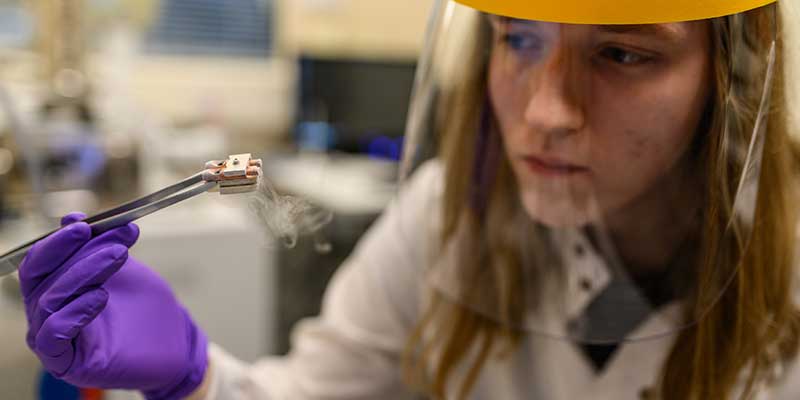
The Science hub
Welcome to our new Science hub! Here we will share resources to help you with your studies, as well as fun activities that aren’t on your curriculum, that you might not even have realised relate to science. For example, if you made a paper airplane as a child, did you ever stop and think about how the laws of physics define whether it flies or falls?
Science experiments at home
Biology - Making a DNA model out of sweets
Would you like to have a go at making DNA? Here’s an experiment for you. In this experiment, the sweets represent the different parts of DNA, also known as nucleotides. To have a go, follow these instructions.
What you’ll need:
- Liquorice sticks, strawberry lace, strawberry pencil or something else that’s long and thin to represent the sugar-phosphate backbone.
- Jelly tots or jelly babies (chopped in half) in 4 colours.
- Lots of cocktail sticks!
Check out this video if you get stuck!
Chemistry - Cornflour and water experiment
Ever tried mixing cornflour and water? When you do, does it become a solid, or a liquid? That’s what this experiment explores. Follow these instructions and read the explanation.
What you’ll need:
- Newspaper (so you don’t get your surface messy)
- 1 cup dry corn-starch
- Large bowl
- ½ cup of water
For a cool demonstration of this experiment and the science behind it, watch this video!
Physics - Paper plane experiment
Ever wondered how aeroplanes stay in flight? Well, the same principles apply to a paper aeroplanes. Paper aeroplanes are a good way to learn about aerodynamics - why don’t you have a go? All you need is a piece of paper!
This video shows you how to make the perfect paper airplane!
The challenge:
- If you have enough space, challenge your household to a paper airplane competition!
- Do your research – see how to make the most aerodynamic plane. This might give you some ideas.
- Set out a starting line and a tape measure/long piece of rope (hint – this might be easier and cause less damage outdoors if you can).
- Take turns standing at the starting line and throwing your paper airplane.
- Throw each plane at least 3 times – this increases the reliability!
- Jot down and measure how far each throw went.
- Calculate the average for each plane – make sure you remove any outliers caused by wind or other major factors.
- The airplane with the longest average distance wins!